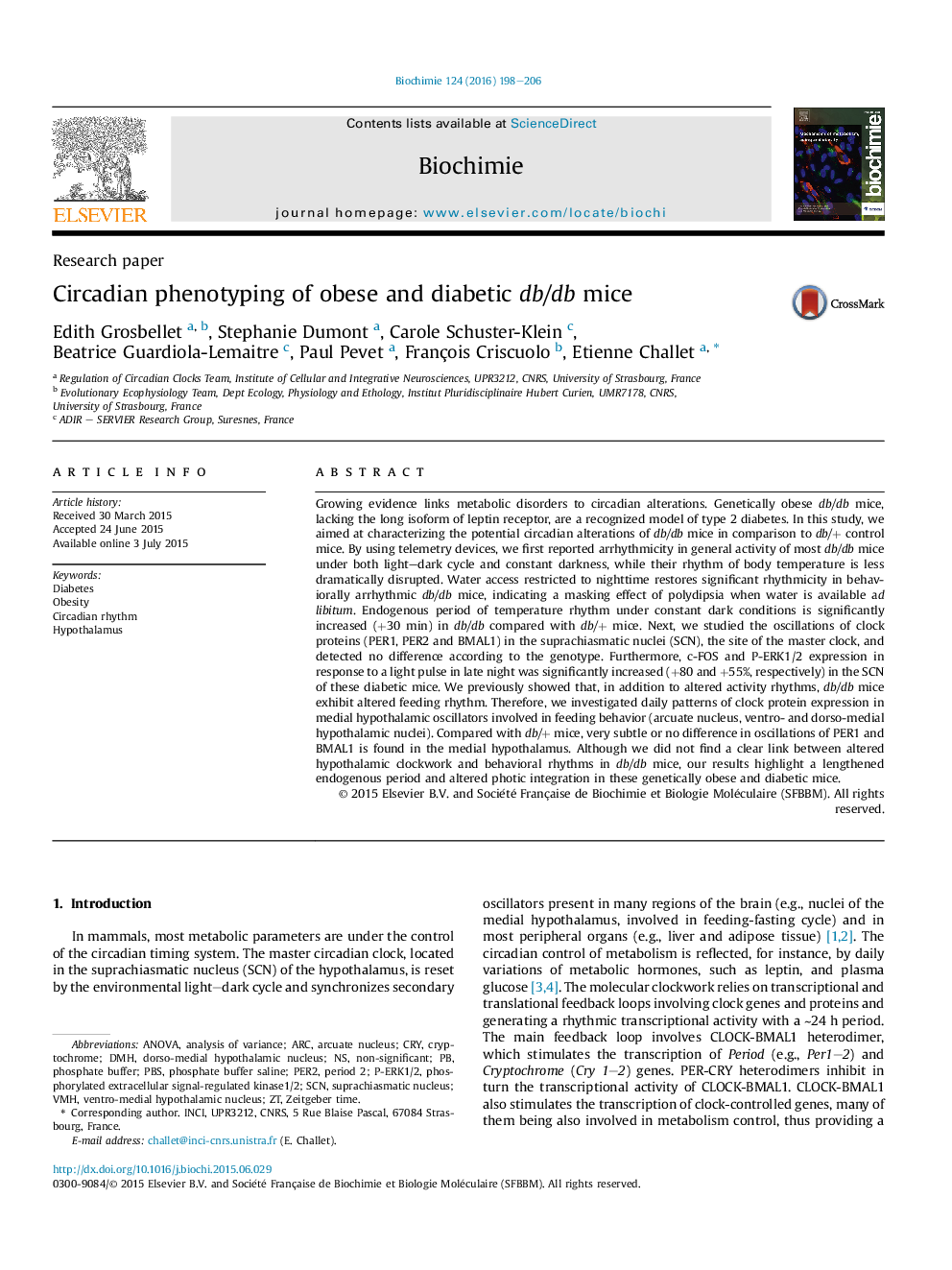| Article ID | Journal | Published Year | Pages | File Type |
|---|---|---|---|---|
| 1951961 | Biochimie | 2016 | 9 Pages |
•Most db/db mice display behavioral arrhythmicity, probably due to polydipsia.•Their endogenous period of temperature rhythm is lengthened.•Db/db mice show increased molecular responses to light in the master clock.•Genetic obesity and type 2 diabetes affect speed of the master clock and photic resetting.
Growing evidence links metabolic disorders to circadian alterations. Genetically obese db/db mice, lacking the long isoform of leptin receptor, are a recognized model of type 2 diabetes. In this study, we aimed at characterizing the potential circadian alterations of db/db mice in comparison to db/+ control mice. By using telemetry devices, we first reported arrhythmicity in general activity of most db/db mice under both light–dark cycle and constant darkness, while their rhythm of body temperature is less dramatically disrupted. Water access restricted to nighttime restores significant rhythmicity in behaviorally arrhythmic db/db mice, indicating a masking effect of polydipsia when water is available ad libitum. Endogenous period of temperature rhythm under constant dark conditions is significantly increased (+30 min) in db/db compared with db/+ mice. Next, we studied the oscillations of clock proteins (PER1, PER2 and BMAL1) in the suprachiasmatic nuclei (SCN), the site of the master clock, and detected no difference according to the genotype. Furthermore, c-FOS and P-ERK1/2 expression in response to a light pulse in late night was significantly increased (+80 and +55%, respectively) in the SCN of these diabetic mice. We previously showed that, in addition to altered activity rhythms, db/db mice exhibit altered feeding rhythm. Therefore, we investigated daily patterns of clock protein expression in medial hypothalamic oscillators involved in feeding behavior (arcuate nucleus, ventro- and dorso-medial hypothalamic nuclei). Compared with db/+ mice, very subtle or no difference in oscillations of PER1 and BMAL1 is found in the medial hypothalamus. Although we did not find a clear link between altered hypothalamic clockwork and behavioral rhythms in db/db mice, our results highlight a lengthened endogenous period and altered photic integration in these genetically obese and diabetic mice.
